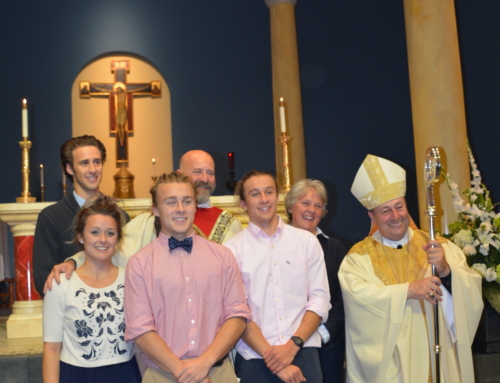C.S. Lewis once observed, ‘How monotonously alike all the great tyrants and conquerors have been: how gloriously different are the saints.’
In his little biographies of Thomas Aquinas and Saint Francis of Assisi, G.K.Chesterton revelled in the sparkling individuality of both saints. Aquinas was the greatest philosopher of his time while Francis was a troubadour for Christ. Thomas a great bull of a man; Francis a scraggy fool of a man. Thomas was a restrained logician; Francis an extravagant poet. In their uniqueness, Aquinas and Francis display the magnificent full blooded humanity which every saint exhibits.
Chesterton and Lewis weren’t the only ones to be delighted by the variety of the saints. Writing to her prioress Thérèse of Lisieux said, ‘How different are the variety of ways through which the Lord leads souls! Souls are more different than faces.’
Take three women who share her name: Theresa of Avila, Teresa Benedicta of the Cross (Edith Stein) and Teresa of Calcutta. They all wear a dull uniform and submit to a regime which seems designed to obliterate their individuality, yet each of them emerge as feisty, formidable and utterly unique individuals.
The saints are unique because they are ordinary people who have allowed an extraordinary power to bring them to their full potential. The saint is fascinating because she is the person she was created to be; and the more we become who we are, the less we will be like anybody else. The saint has no time for role models. She cannot spend time pretending to be someone else because she realises it is the work of a lifetime to become oneself.
While the saints are unique, they also complement one another. Threading through the life of every saint is a strand that links them to every other saint. Chesterton shows how Aquinas and Francis, despite their differences, complement one another and reflect the light of Christ back and forth. Thérèse makes a charming observation about how saints depend on one another spiritually. In heaven, she says,
‘all the Saints will be indebted to each other……who knows the joy we shall experience in beholding the glory of the great saints, and knowing that by a secret disposition of Providence we have contributed there unto…and do you not think that on their side the great saints, seeing what they owe to quite little souls, will love them with an incomparable love? Delightful and surprising will be the friendships found there—I am sure of it. The favoured companion of an Apostle or a great Doctor of the Church will perhaps be a young shepherd lad; and a simple little child may be the intimate friend of a patriarch.
In the divine drama God creates a cast of heroes and children. The thought is echoed in the words of Pope Pius XI about Thérèse, ‘God created such giants of zeal and holiness as Ignatius Loyola and Francis Xavier. Behind these, on the far horizon, we catch a glimpse of Peter and Paul, of Athanasius, Chrysostom, and Ambrose. But behold! The same heavenly Artist has secretly fashioned, with a love well nigh infinite, this maiden so modest, so humble—this child.’
Benedict also hints at the surprising complementarity in the communion of saints. For him the magnificent community of heaven is reflected in the monastic community on earth….
This is an excerpt from my book St Benedict and St Therese–The Little Rule and the Little Way





Leave A Comment
You must be logged in to post a comment.